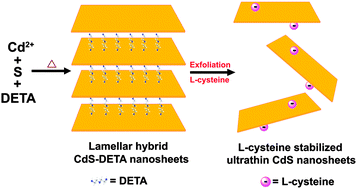Synthesis of ultrathin CdS nanosheets as efficient visible-light-driven water splitting photocatalysts for hydrogen evolution†
Abstract
Ultrathin CdS nanosheets with a thickness of ∼4 nm have been synthesized through an ultrasonic-induced aqueous exfoliation method involving lamellar CdS–DETA hybrid nanosheets as starting materials and L-cysteine as a stabilizing agent. The as-obtained CdS ultrathin nanosheets exhibit efficient photocatalytic activity and good stability for hydrogen production.


 Please wait while we load your content...
Please wait while we load your content...